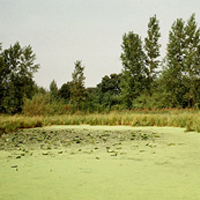

Reducing conditions that cause a lot of perspiration might help prevent the rash. “Heat rash does not require any treatment as it resolves on its own, but for the unbearable itch related to heat rash, using either over-the-counter hydrocortisone cream or taking an over-the-counter antihistamine can help.” “Sweat gets trapped under the skin, creating tiny sweat-filled bumps that itch,” Dr. While most common in infants, adults can also experience heat rash, which occurs when sweat glands are blocked. “To relieve the pain, take cold showers, apply a moisturizer with aloe or an over-the-counter hydrocortisone cream or take an over-the-counter nonsteroidal anti-inflammatory.” Heat Rash “If you get a bad sunburn, make sure to drink plenty of water to stay hydrated,” Dr. Sunscreen only lasts about two hours, and if you’re swimming or sweating, it lasts about one, so it should be reapplied accordingly. “To cover your body while wearing a swimsuit, you should use one ounce – or the amount of sunscreen that would fit in a shot glass,” she said.
#SWIMMERS ITCH MINNESOTA SKIN#
It’s also important to add a thick enough layer to keep your skin protected. Fiessinger recommends getting a sunscreen that has an SPF of at least 30, is broad spectrum and water-resistant. “It’s always good to reflect on how the sunburn happened and what you can do to prevent it from happening in the future.”ĭr. “Despite our best intentions, sunburns happen,” Dr. Most Americans have experienced a sunburn at one point in time, and 60% reported being sunburned so badly that their clothing was uncomfortable. Drying off immediately after getting out of the water can also help prevent the rash. Swimmers can research the area prior to going, since infested water is typically reported. “It looks like itchy welts throughout the body, except in the areas a swimsuit would cover.” “It happens due to a parasite from the water burrowing underneath the skin,” Dr. Swimmer’s Itch is a rash that can develop after swimming in fresh salt water, and may appear minutes to days after swimming in contaminated water.
#SWIMMERS ITCH MINNESOTA HOW TO#
Lori Fiessinger, MD, a dermatologist with University of Minnesota Physicians (M Physicians), explains how to identify these conditions, and how to treat them if they happen. Thankfully, many can be prevented, or treated at home. While summertime might mean more time spent in the great outdoors, it can also mean increased exposure to sunlight, chemicals, insects or plants – which can all lead to skin issues.


 0 kommentar(er)
0 kommentar(er)
